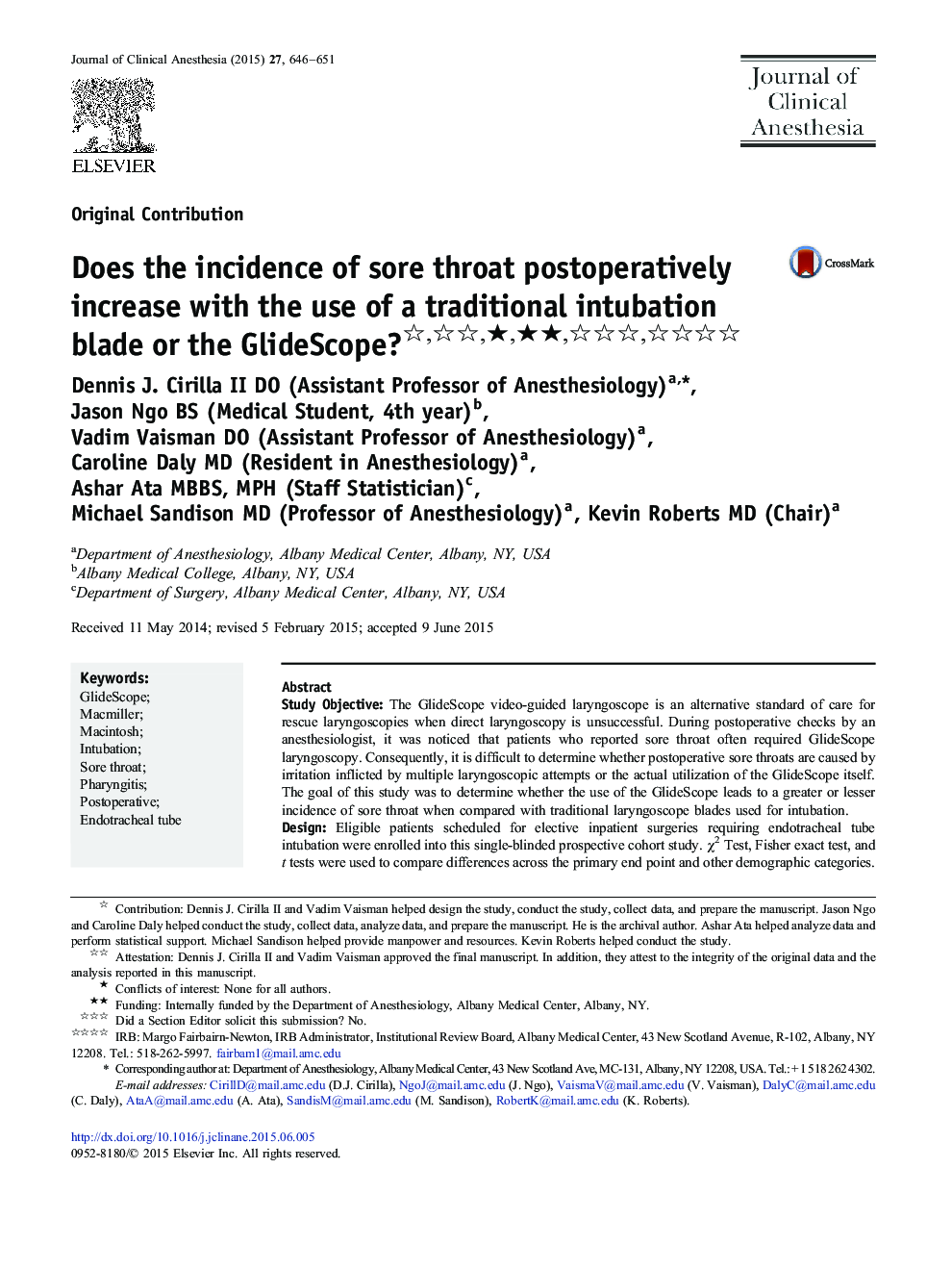| Article ID | Journal | Published Year | Pages | File Type |
|---|---|---|---|---|
| 2762195 | Journal of Clinical Anesthesia | 2015 | 6 Pages |
Study ObjectiveThe GlideScope video-guided laryngoscope is an alternative standard of care for rescue laryngoscopies when direct laryngoscopy is unsuccessful. During postoperative checks by an anesthesiologist, it was noticed that patients who reported sore throat often required GlideScope laryngoscopy. Consequently, it is difficult to determine whether postoperative sore throats are caused by irritation inflicted by multiple laryngoscopic attempts or the actual utilization of the GlideScope itself. The goal of this study was to determine whether the use of the GlideScope leads to a greater or lesser incidence of sore throat when compared with traditional laryngoscope blades used for intubation.DesignEligible patients scheduled for elective inpatient surgeries requiring endotracheal tube intubation were enrolled into this single-blinded prospective cohort study. χ2 Test, Fisher exact test, and t tests were used to compare differences across the primary end point and other demographic categories.SettingOperating rooms and postanesthesia recovery unit, Albany Medical Center, Albany, NY.PatientsThere were a total of 151 patients with American Society of Anesthesiologists grades 1 to 3 included in the study.InterventionsEighty-one patients were randomized to a control group that received traditional laryngoscopy via Macintosh/Miller blades and 70 patients received video-guided intubation via the GlideScope.MeasurementsThe incidence of postoperative sore throat was recorded via a yes/no questionnaire within 24 hours after extubation. Secondary parameters such as provider type, sex, and perceived difficulty were also recorded.Main resultsThere was no significant difference in the proportion of patients reporting sore throat by type of blade used (Mac/Miller 36.3% vs GlideScope 32.4%, P = .619). For secondary outcomes, women were significantly more likely to report sore throat as compared with men (men 24.3% vs women 43.2%, P = .015), and the provider type was significantly associated with the occurrence of postoperative sore throat (attendings 26.8% vs certified registered nurse anesthetists 52.3% vs third-year clinical anesthesia residents 30%, P = .012).ConclusionsUse of the GlideScope videolaryngoscopy was not significantly associated with increased occurrence of postoperative sore throat when compared with traditional intubation techniques. Our results may enable more trainees to acquire intubation skills with the GlideScope during an initial intubation attempt in patients with American Society of Anesthesiologist grades 1 to 3, with optimization of patient satisfaction in respect to postoperative sore throats. In addition, a provider's choice of intubation technique based on either Macintosh/Miller blades or the GlideScope does not significantly impact a patient's risk of postoperative sore throat.
